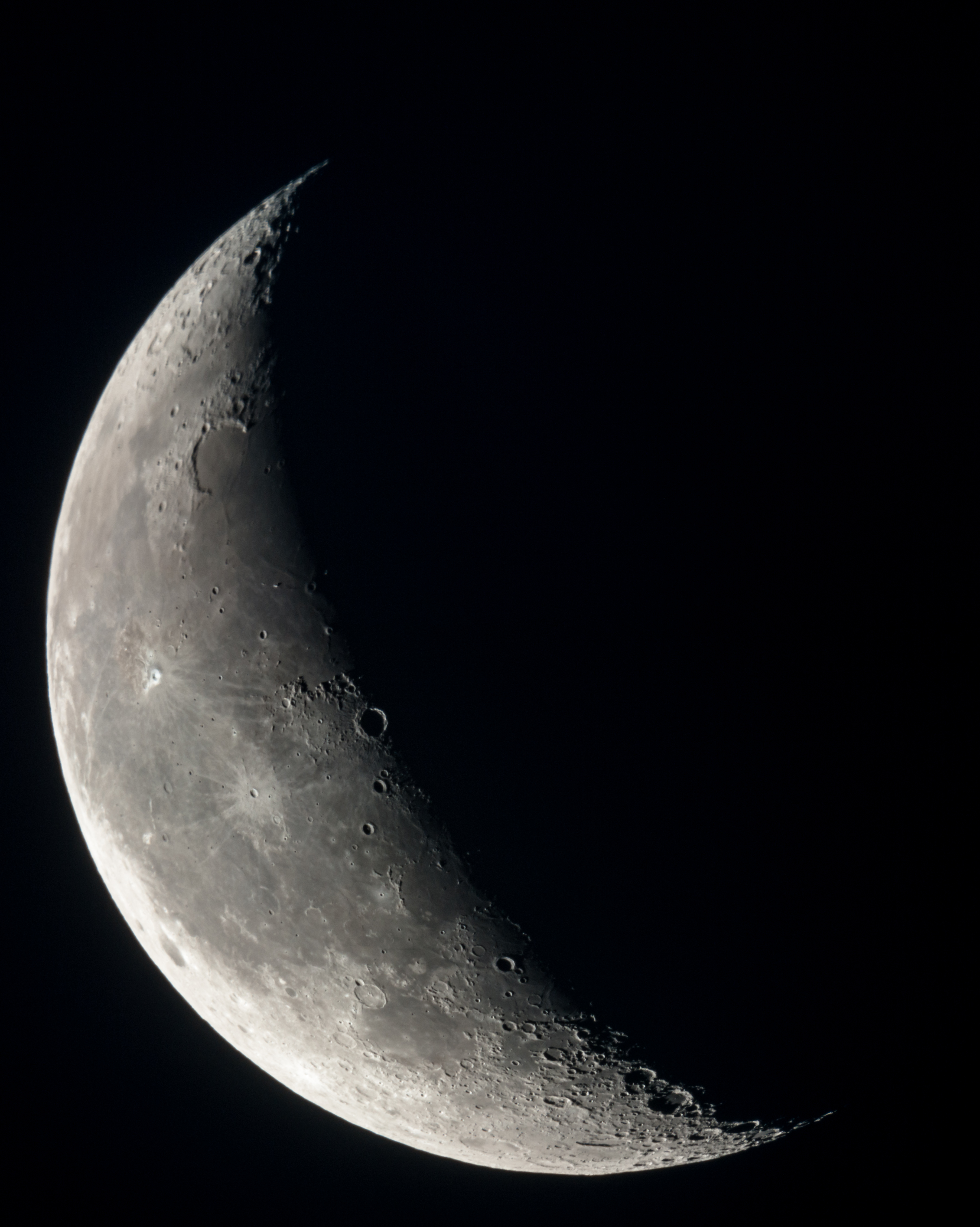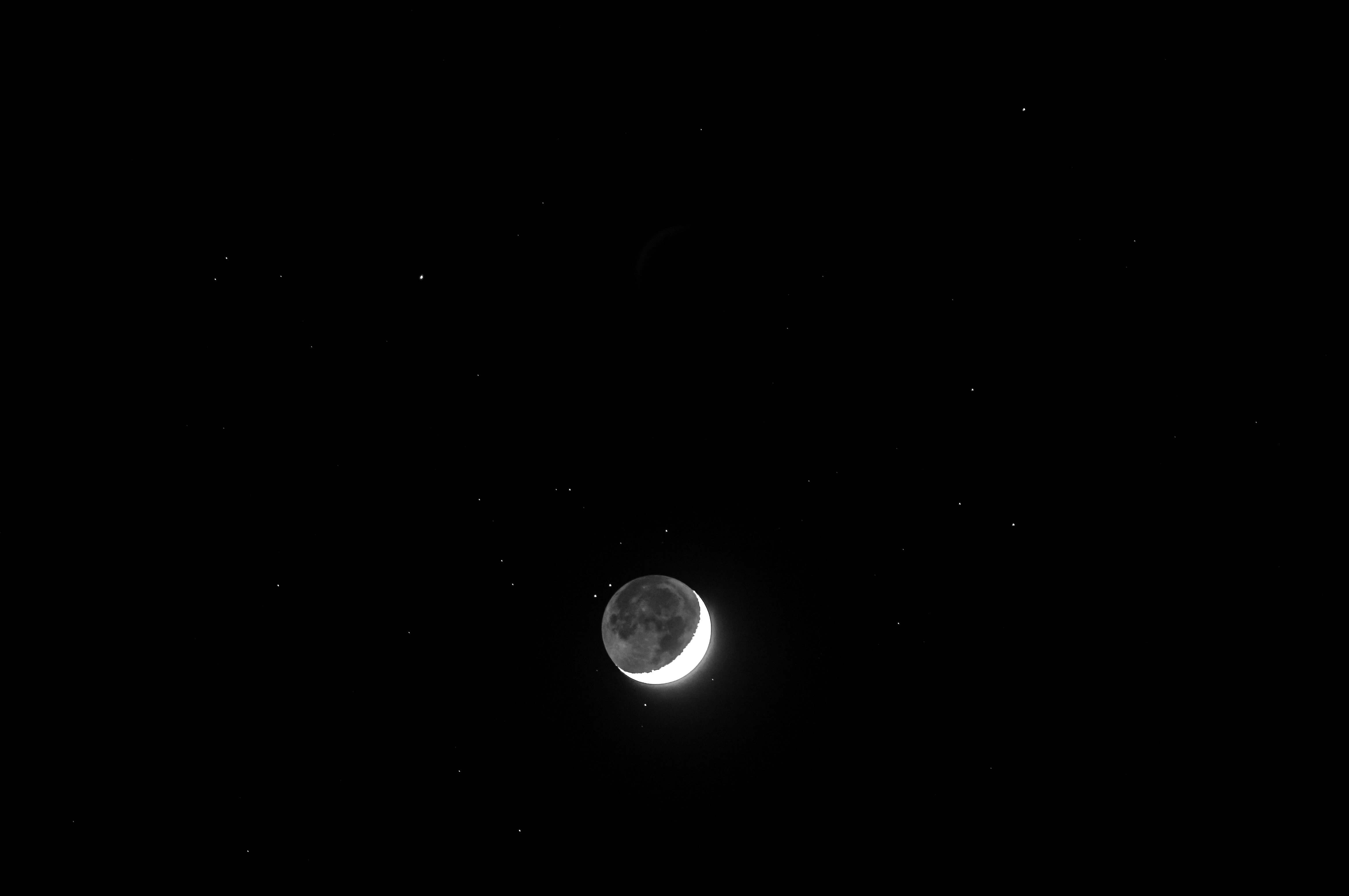The moon: our natural satellite. Beautiful to observe. Pesky source of light during astrophotography. The details you see and the three dimensional effect of the shadows glooming over huge craters, once you look through a binocular or through a telescope, are amazing.
Actually, this is not the dark side of the moon. The moon is (practically) “tidally locked” to earth, meaning that the same part of the moon is facing earth. “The dark side of the moon” is the “other” side of the moon - that we never see. In this photo we see the shadow-side of the moon, illuminated by the light that is bounced off the earth, shining on the part of the moon that isn’t facing the sun.
Technical details: Pentax K7 / Pentax-FA 200mm @ f/3.2 / 1.6s / ISO 400 / 10 apr 2016 Post processing: post processed with Adobe Lightroom*
Lunar occultations take place when a star disappears behind the moon. Here we see Aldebaran (α Tauri) about to disappear behind the moon. Or, from a different perspectice, the moon moves between us and the star. Or, from another perspectice, the earth moves in such a way the the moon is placed between us and the star. All a matter of (frame of) reference. Nevermind. It’s a pretty picture.
Technical details: Pentax K7 / Meade LX90ACF @ f/10 / 1/30s / ISO 400 / 23 dec 2015 Post processing: post processed with Adobe Lightroom
Waning crescent moon, showing beautiful shadow effects on the crater Copernicus (center) and Tycho and Clavius (bottom).
Technical details: Pentax K7 / Meade LX90ACF @ f/10 / 1/2s / ISO 200 / 18 sept 2014 Post processing: panorama of 2 images, stiched with Adobe Photoshop, post processed with Adobe Photoshop and Lightroom



